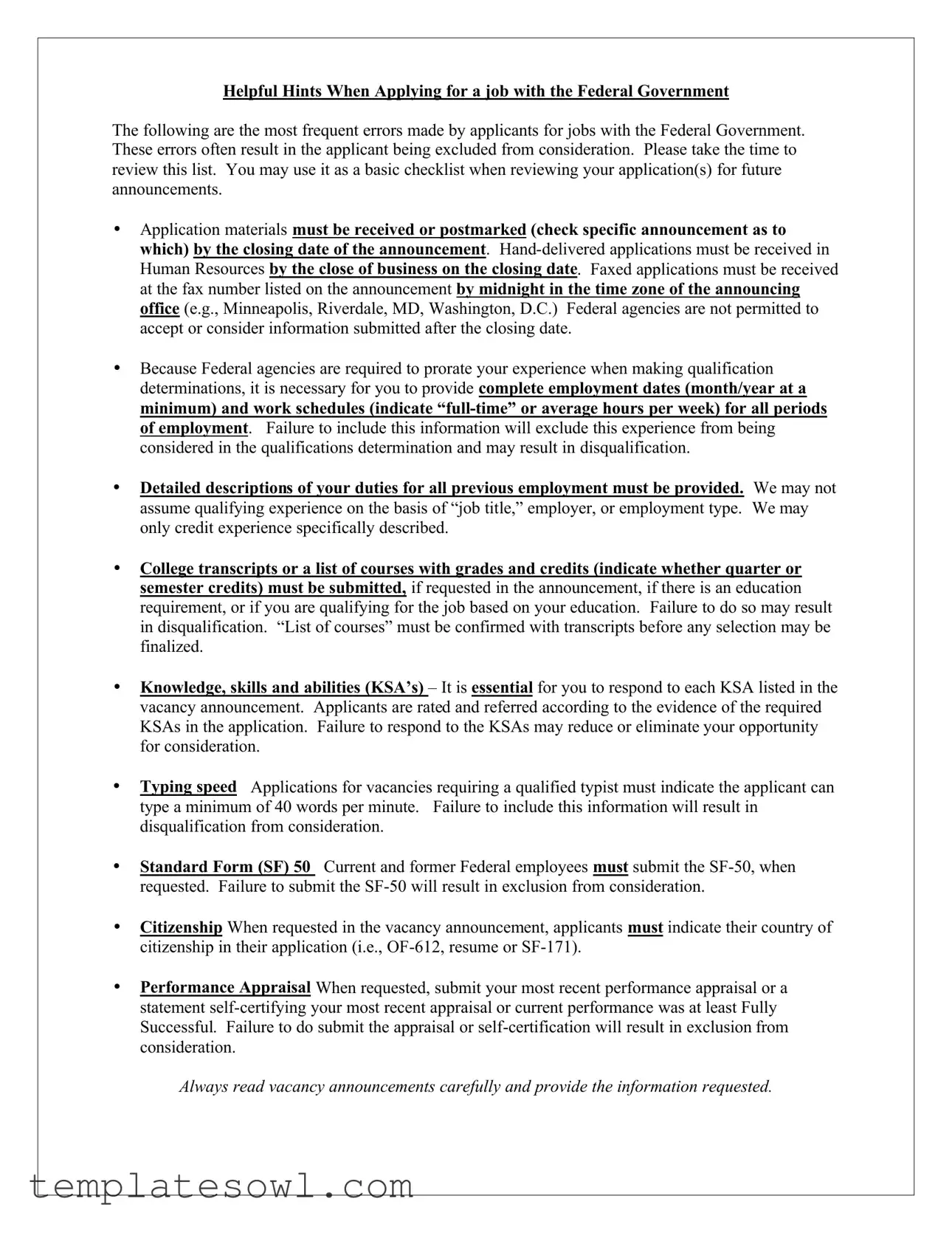What is the Eopf Usda form?
The Eopf Usda form is a document used by applicants applying for jobs with the U.S. Department of Agriculture (USDA) and other federal agencies. It facilitates the submission of required information regarding qualifications, experience, and any necessary documentation to ensure the application is complete and meets the standards for review. Proper completion of the form is crucial to avoid disqualification from the job consideration process.
What common mistakes do applicants make when completing the Eopf Usda form?
Applicants often make several common mistakes, which can lead to exclusion from job consideration. These errors include failing to submit materials by the announcement's closing date, not providing complete employment dates and work schedules, omitting detailed descriptions of duties for previous jobs, and neglecting to include required documents such as college transcripts or performance appraisals. A failure to answer knowledge, skills, and abilities (KSA) questions can also diminish chances for being considered for the position.
How important are the employment dates on the Eopf Usda form?
Employment dates are crucial as federal agencies must prorate experience for qualification determinations. Applicants should provide complete and accurate information, including the month and year of employment, as well as whether their work was full-time or part-time. Incomplete or vague information can lead to disqualification, as it prevents the agency from fairly assessing the applicant's qualifications.
What details must I include in the duty descriptions on the Eopf Usda form?
Applicants must include detailed descriptions of their duties for all past employment. Merely stating a job title is insufficient. Agencies will only credit experience that is explicitly described. By providing comprehensive details about responsibilities and abilities showcased in previous positions, applicants can strengthen their qualifications.
When are transcripts required, and what should I include?
Transcripts or a list of courses are required when an educational background is necessary for the position. If requested, applicants must submit their college transcripts that identify course grades and credits. Indicating whether the credits are from a semester or quarter system is also important. Failure to submit this information can lead to disqualification from the process.
What are KSAs, and why are they significant?
Knowledge, skills, and abilities (KSAs) are specific requirements listed in the vacancy announcement. Applicants must address each KSA to demonstrate their qualifications for the job. The evaluation process heavily relies on evidence of these KSAs in the application. Ignoring or inadequately responding to KSA requirements can significantly reduce an applicant's chances of being considered for the position.
What information is necessary for applicants who are current or former federal employees?
Current and former federal employees must submit a Standard Form (SF) 50 when requested in the job announcement. This form provides verification of federal employment and is essential for assessing qualifications. Without the SF-50, applicants risk exclusion from consideration for the job.
How do I submit a performance appraisal with my Eopf Usda form?
If the vacancy announcement requests a performance appraisal, applicants must provide their most recent appraisal or self-certify their performance level as "Fully Successful" or better. Not including this documentation can result in disqualification, as it is a required part of the application process. Always ensure to read the vacancy announcement thoroughly to understand submission requirements.

